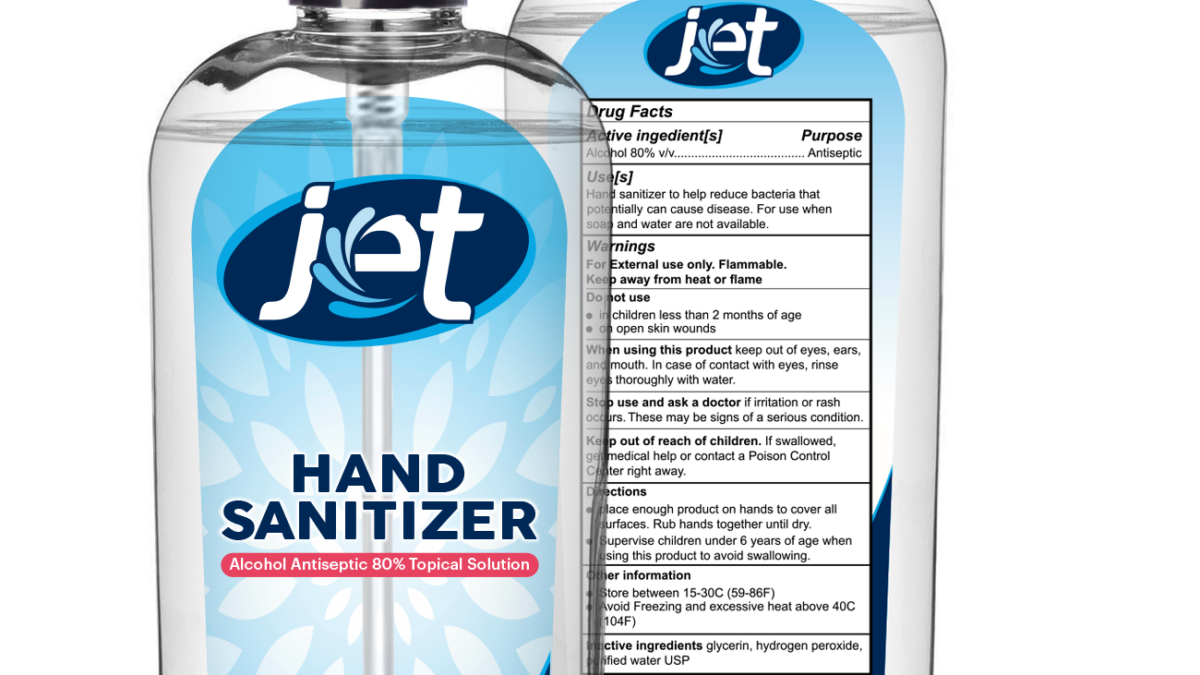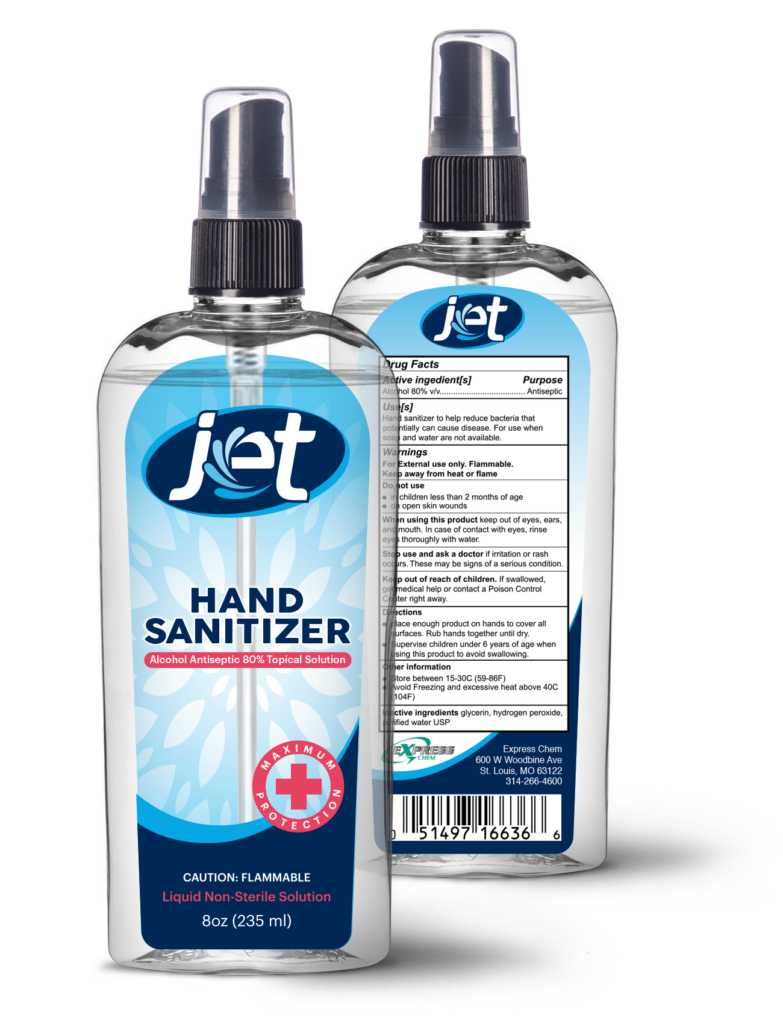

As students and teachers begin returning to college and university campuses in the first week of August, and K-12 schools in the weeks that follow, they will have read guidebooks produced by their administrations designed to reduce the coronavirus infection from arriving on campus and from spreading should someone contract it.
Starting with guidelines as general as those issued by the Centers for Disease Control and Prevention (CDC) to cities and states with stricter measures, and more detailed expectations from the university administration, most schools are issuing precise guidelines for engagement with others. Preventative measures include products like Jet Hand Sanitizer, a liquid, antimicrobial solution made of 80% topical alcohol, designed to kill 99.9% of germs found on hands that could potentially cause disease such as COVID-19, and is among the most effective products to be used by everyone on campus.
COVID-19 is mostly spread by respiratory droplets released when people talk, cough, or sneeze. It is thought that the virus may spread to hands from a contaminated surface and then to the nose or mouth, causing infection. Therefore, personal prevention practices (such as handwashing, staying home when sick) and environmental prevention practices (such as cleaning and disinfection) are important principles that are covered in this document. Fortunately, there are a number of actions Institutions of Higher Education (IHE) administrators can take to help lower the risk of COVID-19 exposure and spread.
Hand hygiene goals are becoming more common, and the pandemic has placed them front and center. Mask-wearing and hand hygiene are the most important interventions to reduce the risk of transmission of pathogens. Most return to campus guidelines include these instructions for students and staff: ” If soap and water is not readily available, use a hand sanitizer that contains at least 60% alcohol. Cover all surfaces of your hands and rub them together until they feel dry. Avoid touching your eyes, nose, and mouth, and wash your hands after touching your face. Touchless hand sanitizer stations will be placed in multiple locations on campus to encourage hand hygiene.”
Addressing hand hygiene and respiratory etiquette, the CDC states that schools should:
- Recommend and reinforce handwashing with soap and water for at least 20 seconds.
- If soap and water are not readily available, hand sanitizer that contains at least 60% alcohol can be used.
- Encourage students, faculty, and staff to cover coughs and sneezes with a tissue or use the inside of your elbow. Used tissues should be thrown in the trash and hands washed immediately with soap and water for at least 20 seconds. Again, if soap and water are not readily available, hand sanitizer that contains at least 60% alcohol can be used.
Practicing hand hygiene, which includes the use of alcohol-based hand rub (ABHR) or handwashing, is a simple yet effective way to prevent the spread of pathogens and infections in healthcare settings. CDC recommendations reflect this important role.
Hand sanitizers that actually kill the germs must contain at least 60% alcohol. The higher the alcohol content, the more powerful the sanitizer. Another plus is the quick-drying aspect of high alcohol content sanitizers. The Centers for Disease Control and Prevention (CDC) recommendations reflect the importance of cleaning hands to prevent disease transmission.
The exact contribution of hand hygiene to the reduction of direct and indirect spread of coronaviruses between people is currently unknown. However, hand washing mechanically removes pathogens, and laboratory data demonstrate that ABHR formulations in the range of alcohol concentrations recommended by CDC, inactivate SARS-CoV-2. [1,2]
ABHR effectively reduces the number of pathogens that may be present on the hands of healthcare providers after brief interactions with patients or the care environment.
The CDC also notes that an alcohol-containing preparation designed for application to the hands for reducing the number of viable microorganisms on the hands. In the United States, such preparations usually contain 60%–95% ethanol or isopropanol. Other solutions are antimicrobial soap. Soap (i.e., detergent) containing an antiseptic agent and antiseptic agents.
Hand washing mechanically removes pathogens, and laboratory data demonstrate that ABHR formulations in the range of alcohol concentrations recommended by CDC, inactivate SARS-CoV-2. [1,2]
- Kratzel A, Todt D, V’kovski P, Steiner S, Gultrom M, Thao TTN, et al. Inactivation of severe acute respiratory syndrome coronavirus 2 by WHO-recommended hand rub formulations and alcohols. Emerg Infect Dis. 2020 Jul [date cited]. https://doi.org/10.3201/eid2607.200915external icon
- Siddharta A, Pfaender S, Vielle NJ, Dijkman R, et al. Virucidal activity of World Health Organization recommended formulations against enveloped viruses include Zika, Ebola, and emerging Coronaviruses. J Infect Dis. 2017
